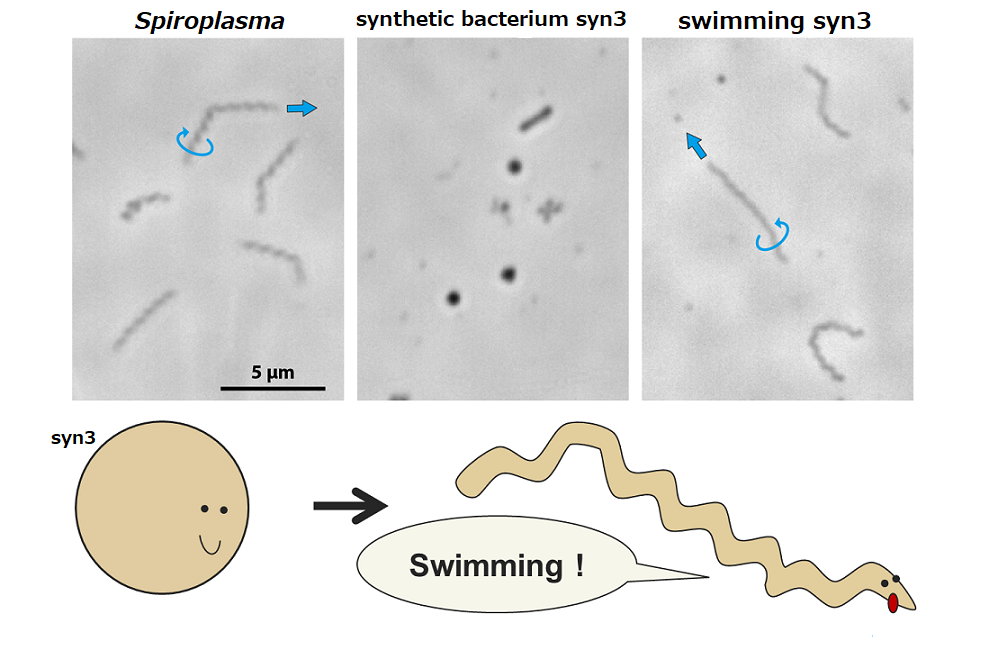Research News
Dec 5, 2022
Smallest mobile lifeform created
Understanding of cell motility’s evolution swims forward!
Osaka Metropolitan University researchers have made the mobile lifeforms that have the smallest genome so far. They introduced seven proteins, thought to let Spiroplama bacteria swim by spiraling, into a strain of synthetic bacteria. The small spherical synthetic bacteria have minimal genetic information, allowing them only to grow and divide. With the expression of these additional proteins, the synthetic bacteria formed helices and were capable of swimming, making them the smallest mobile lifeforms genetically.

The origin of all biological movements, including walking, swimming, or flying, can be traced back to cellular movements; however, little is known about how cell motility arose in evolution.
A research team led by graduate student Hana Kiyama, from the Graduate School of Science at Osaka City University, and Professor Makoto Miyata, from the Graduate School of Science at Osaka Metropolitan University, introduced seven proteins, believed to be directly involved in allowing Spiroplasma bacteria to swim into a synthetic bacterium named syn3—through genetic engineering. syn3 was designed and chemically synthesized to have the smallest genomic DNA possible including the minimum essential genetic information required for growth from the smallest genomes of naturally occurring Mycoplasma bacteria.
“Studying the world’s smallest bacterium with the smallest functional motor apparatus could be used to develop movement for cell-mimicking microrobots or protein-based motors,” said Professor Miyata.
This genetically re-engineered syn3 changed from its normal spherical shape into a spiraling helix, which was able to swim by reversing the helix’s direction just like Spiroplasma. Further investigation revealed that only two of these newly added proteins were required to make syn3 capable of minimal swimming.
“Our swimming syn3 can be said to be the ‘smallest mobile lifeform’ with the ability to move on its own,” said Professor Miyata. “The results of this research are expected to advance how we understand the evolution and origins of cell motility.”
Funding
This study was supported by JST CREST, grant number JPMJCR19S5; JSPS KAKENHI, grant numbers JP17H01544 and JP21J23306; and JST ERATO grant number JPMJER1902.
Paper Information
Journal: Science Advances
Title: Reconstitution of a minimal motility system based on Spiroplasma swimming by two bacterial actins in a synthetic minimal bacterium
Author: Hana Kiyama, Shigeyuki Kakizawa, Yuya Sasajima, Yuhei O Tahara, Makoto Miyata
DOI: 10.1126/sciadv.abo7490
Publication date: November 30, 2022.
Contact
Graduate School of Science
Professor. Makoto MIYATA
E-mail: miyata[at]omu.ac.jp
*Please change [at] to @.
SDGs
